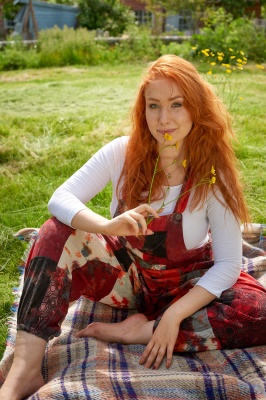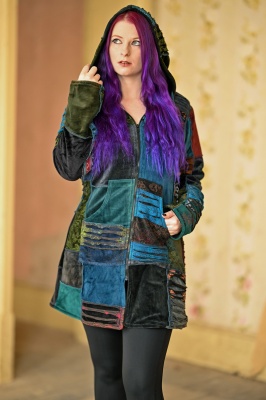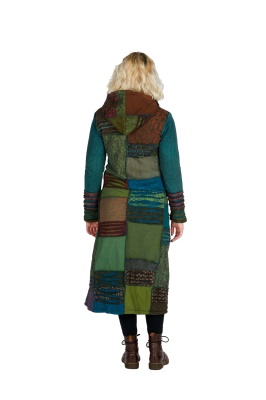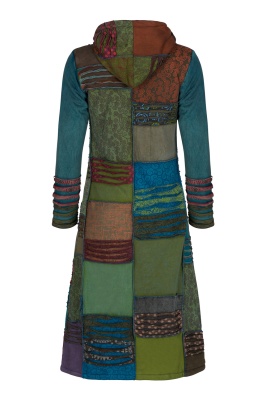A Lethal Accusation – Three of England's Scariest Witch Trials
The Bideford witch trial in 1682 saw Temperance Lloyd, Mary Trembles and Susannah Edwards hanged as witches, despite the usual complete lack of evidence. It was the last recorded hanging of witches in England. In Scotland the fear of witches continued long after the last person was executed for witchcraft there in the 1720s.
With just a few short weeks to go until Witchfest in Brighton, where we'll be selling our deliciously witchy clothing, we thought this was the perfect time to explore some of the best-known British witch trials.
Sheer madness, or understandable in a historical context?
These days we know that witches can't curse people, make milk go sour, make cattle die or cause babies to be born deformed. But back in medieval times, in context, the threat of witchcraft made perfect sense. It was a weird world where people truly believed that evil spirits walked the earth, magicians conducted real magic and that a simple curse could be the death of you.
While there were no actual laws prohibiting witchcraft until 1542, when King Henry 8th passed an Act against it, people considered witches a threat way before then.
The year 1441 - Eleanor Cobham falls foul of magicians and wise women
In 1441 Eleanor Cobham, the Duchess of Gloucester, was sent to prison for life thanks to an alleged unholy alliance with a magician called Roger Bolingbroke and a wise woman called Margery Jourdemayne.
Eleanor and her unfortunate partners in crime were accused of plotting to kill Henry the Sixth with sorcery. Bolingbroke was forced onto a stage built in the old St Paul’s Cathedral churchyard to hear a sermon against magic before being convicted of high treason, hanged, drawn and quartered. Jourdemayne was accused of being a heretic and burned alive at the stake in Smithfield.
At the time necromancy and sorcery were widely feared and trials for treason, heresy, slander and murder were not unusual, especially amongst the wealthy. But things were about to get a whole lot worse, with widespread moral panic feeding the terrifying anti-witch flames.
The year 1612 – The infamous Pendle hangings
By the 1600s Britain's anti-witch frenzy had reached plague proportions. Any woman who happened to have a decent knowledge of healing herbs or rudimentary medicine was at risk, and if your neighbour decided they didn't like you for some reason, an accusation of witchcraft often followed. It's hard to imagine how very frightening it must have been for anyone who was a bit different, eccentric or didn't toe the everyday line.
The Pendle witches allegedly confessed to attending a Sabbat - a witch meeting – at Pendle Hill on Easter Friday 1612. It all kicked off thanks to Alison Device, who met a peddler called John Law and asked him for a pin. He refused, and later became semi-paralysed. It was probably a stroke, but the locals suspected witchcraft and told their local magistrate Roger Nowell. Poor Alison confessed, probably under duress, as did her grandma and a local woman called Old Chattox.
Things soon spiralled out of control, eventually leading to 19 people being arrested. They were taken to Lancaster Castle for trial under the 1604 act of James VI and I, which replaced Henry 8th's original law, and 20th August that year saw two men and eight women, all innocent, hanged on the moors above the city.
The year 1808 – Great Paxton sees mob law rule the day
The laws against witchcraft were repealed in 1736. But people still resorted to mob violence when they suspected it. That's what happened during 1808, in the village of Great Paxton in Cambridgeshire.
When a number of village women fell ill with fits and depression, the community took it as a sign that evil was at work. When a farmer accused Ann Izzard of using magic to crash his cart on the way back from St Neots, things got nasty. A mob broke into Ann's cottage and dragged her outside, semi-naked, for a brutal beating with a club. Some of the mob scratched her arms and drew blood, something they believed would destroy her magical abilities. The next night Ann was attacked again, fleeing to a nearby village. Soon afterwards she brought legal proceedings against the villagers, nine of whom were prosecuted.
The year 2017 – When most witches are white and nobody minds!
To this day, in some African countries, witchcraft is still feared and terrible things have been done in its name. But in Britain, these days you're free to call yourself a witch and nobody will mind, let alone prosecute, torture, beat, drown, burn, hang, draw or quarter you. Instead, we hold celebrations of witchiness attended by peace-loving folk in their thousands.
Come and visit us on our stand at this year's Witchfest. You won't believe our magical range of clothing ;)




.jpg)
.jpg)


.jpg)







.jpg)
.jpg)
.jpg)























